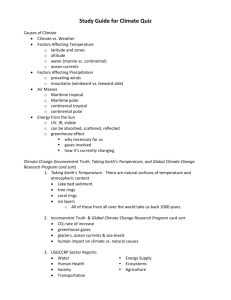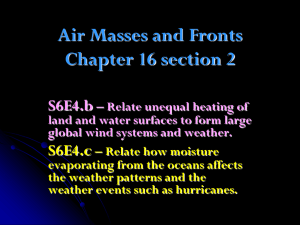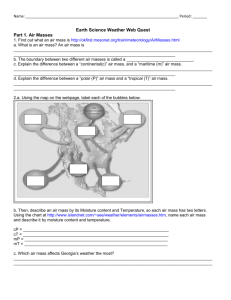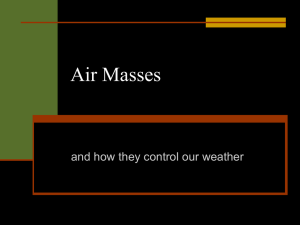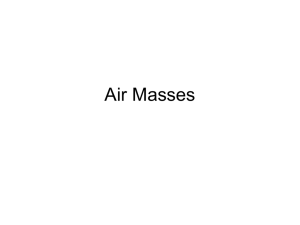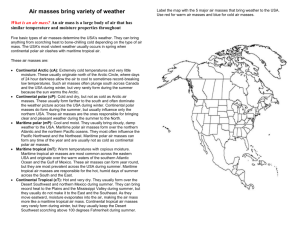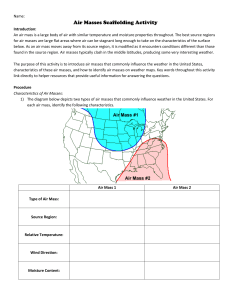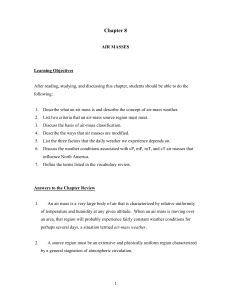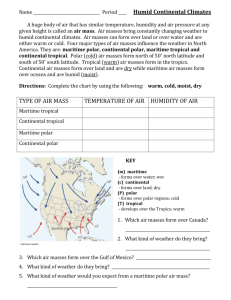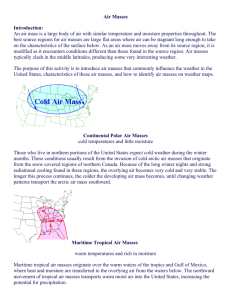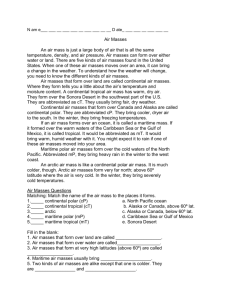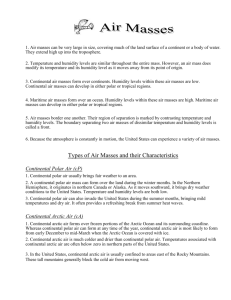Air masses bring variety of weather
advertisement
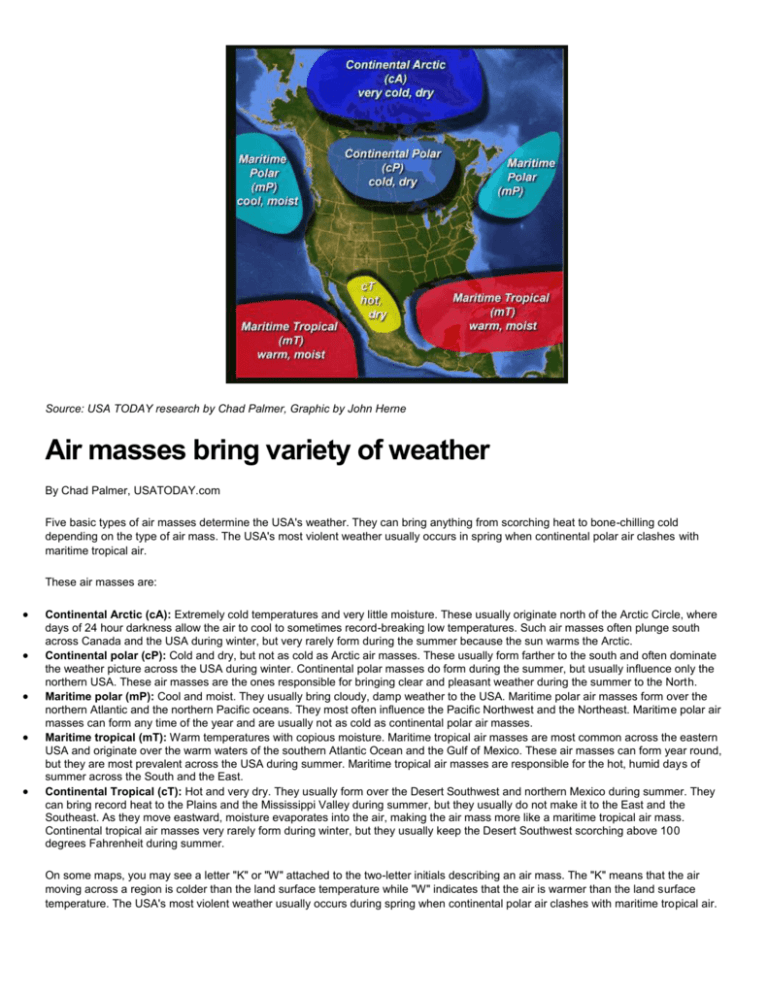
Source: USA TODAY research by Chad Palmer, Graphic by John Herne Air masses bring variety of weather By Chad Palmer, USATODAY.com Five basic types of air masses determine the USA's weather. They can bring anything from scorching heat to bone-chilling cold depending on the type of air mass. The USA's most violent weather usually occurs in spring when continental polar air clashes with maritime tropical air. These air masses are: Continental Arctic (cA): Extremely cold temperatures and very little moisture. These usually originate north of the Arctic Circle, where days of 24 hour darkness allow the air to cool to sometimes record-breaking low temperatures. Such air masses often plunge south across Canada and the USA during winter, but very rarely form during the summer because the sun warms the Arctic. Continental polar (cP): Cold and dry, but not as cold as Arctic air masses. These usually form farther to the south and often dominate the weather picture across the USA during winter. Continental polar masses do form during the summer, but usually influence only the northern USA. These air masses are the ones responsible for bringing clear and pleasant weather during the summer to the North. Maritime polar (mP): Cool and moist. They usually bring cloudy, damp weather to the USA. Maritime polar air masses form over the northern Atlantic and the northern Pacific oceans. They most often influence the Pacific Northwest and the Northeast. Maritime polar air masses can form any time of the year and are usually not as cold as continental polar air masses. Maritime tropical (mT): Warm temperatures with copious moisture. Maritime tropical air masses are most common across the eastern USA and originate over the warm waters of the southern Atlantic Ocean and the Gulf of Mexico. These air masses can form year round, but they are most prevalent across the USA during summer. Maritime tropical air masses are responsible for the hot, humid days of summer across the South and the East. Continental Tropical (cT): Hot and very dry. They usually form over the Desert Southwest and northern Mexico during summer. They can bring record heat to the Plains and the Mississippi Valley during summer, but they usually do not make it to the East and the Southeast. As they move eastward, moisture evaporates into the air, making the air mass more like a maritime tropical air mass. Continental tropical air masses very rarely form during winter, but they usually keep the Desert Southwest scorching above 100 degrees Fahrenheit during summer. On some maps, you may see a letter "K" or "W" attached to the two-letter initials describing an air mass. The "K" means that the air moving across a region is colder than the land surface temperature while "W" indicates that the air is warmer than the land surface temperature. The USA's most violent weather usually occurs during spring when continental polar air clashes with maritime tropical air.


